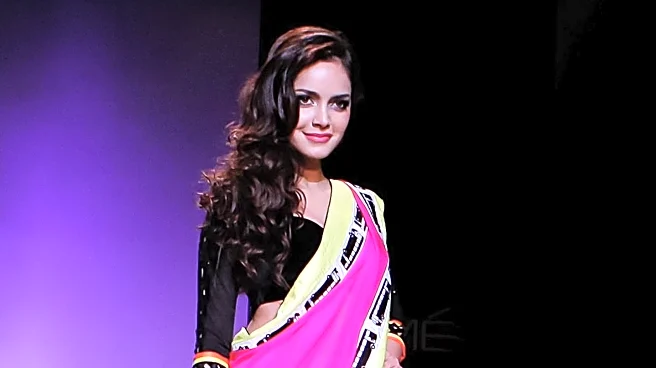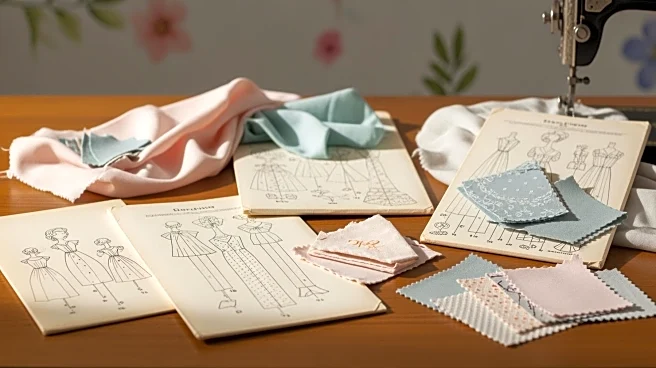What's Happening?
Hybrid fashion is gaining traction as a versatile and functional approach to dressing, characterized by garments that combine multiple styles and functions. This trend includes items like skirt-pants,
layered tees, and scarf tops, which offer adaptability for various occasions and climates. The concept, which dates back to the 1980s with designer Yeohlee Teng's scarf-coat hybrids, has evolved through the years, gaining popularity during the Y2K era with the skirt-over-pants look. Today, celebrities such as Kendall Jenner and Jennifer Lawrence are embracing these styles, which are designed to accommodate the busy, multifaceted lives of modern individuals. The trend emphasizes practicality without sacrificing style, offering pieces that can be worn in multiple ways throughout the day.
Why It's Important?
The rise of hybrid fashion reflects a broader shift towards sustainability and practicality in the fashion industry. As consumers increasingly seek clothing that can adapt to various settings and reduce the need for multiple outfit changes, brands are responding with innovative designs that meet these demands. This trend not only caters to the needs of busy individuals but also aligns with the growing emphasis on reducing fashion waste by promoting multifunctional garments. The popularity of hybrid fashion could influence future design trends, encouraging more brands to focus on creating versatile, long-lasting pieces that appeal to environmentally conscious consumers.
What's Next?
As hybrid fashion continues to gain momentum, it is likely that more designers and brands will explore this trend, leading to a wider variety of multifunctional garments in the market. This could result in increased competition among fashion brands to innovate and offer unique, adaptable designs. Additionally, the trend may inspire further advancements in fabric technology and garment construction, as designers seek to create pieces that are not only stylish but also durable and comfortable. The ongoing interest in sustainability and practicality in fashion suggests that hybrid styles will remain relevant, potentially influencing consumer preferences and industry standards in the long term.
Beyond the Headlines
The hybrid fashion trend also raises questions about the future of fashion consumption and production. As consumers become more aware of the environmental impact of their clothing choices, the demand for versatile, sustainable garments is likely to grow. This shift could lead to changes in how fashion is produced, with a greater focus on ethical sourcing and manufacturing practices. Moreover, the trend highlights the importance of innovation in the fashion industry, as brands strive to meet the evolving needs of consumers while addressing environmental concerns. The success of hybrid fashion could pave the way for more sustainable practices and a reimagining of traditional fashion norms.











